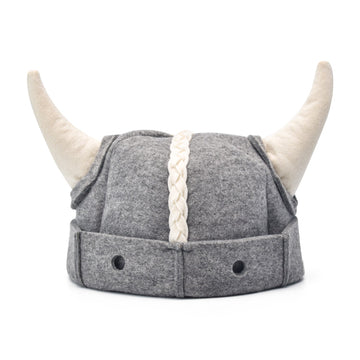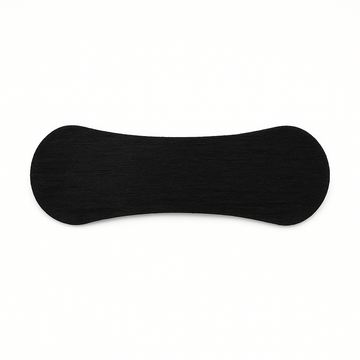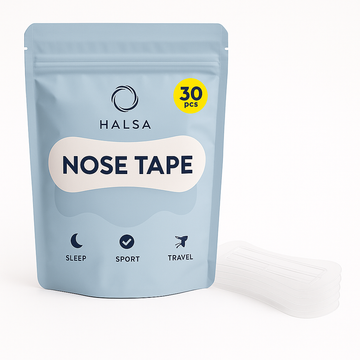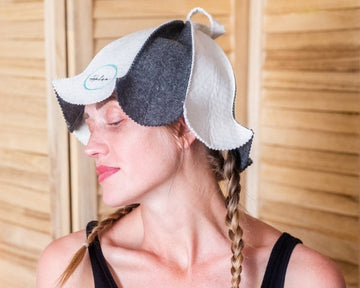Introduction
In our fast-paced, always-on world, stress, anxiety, and mood challenges are too common. Many people look for natural, evidence-based ways to support mental health, beyond medication or therapy alone. One time-honored tool is the sauna. In this blog post, we’ll explore how sauna bathing supports mental health, review scientific evidence, and explain why wearing a wool sauna hat—like the ones we offer at Halsa—can help you stay in the sauna longer, make the experience more enjoyable, and thus magnify those mental health benefits.
The Science Behind Sauna & Mental Health
Heat stress, endorphins, and the relaxation response
One of the key mechanisms by which sauna use benefits mood and mental wellbeing is via activation of the “relaxation response.” The elevated heat triggers the release of endorphins (your body’s “feel-good” chemicals) while also reducing cortisol (the stress hormone). Saunas can shift the autonomic nervous system away from chronic stress (sympathetic dominance) toward parasympathetic balance (rest, digestion, recovery).
Regular sauna users often report reduced anxiety, improved mood, and better emotional resilience. For example, a Swedish survey found that sauna users rated their mental health, energy, and happiness higher than non-sauna users.
Sleep, mood stability, and stress reduction
Quality sleep is a cornerstone of mental health, and sauna use appears to improve sleep metrics. In a recent Swedish study, individuals using sauna at least monthly had better self-rated sleep, more energy, and better mental health metrics compared to nonusers.
Moreover, repeated sauna exposure has been associated with lower incidence of mood disorders and psychiatric illness. In the KIHD cohort, men reporting sauna use 4–7 times per week had a 77% lower risk of developing psychotic disorders (after adjusting for confounders).
Though more research is needed, meta-analyses and reviews suggest that sauna bathing is a promising adjunctive tool for mental wellness, especially for reducing stress, supporting mood, and promoting resilience.
Sauna as passive “heat therapy”—a complement to exercise
Heat exposure in a sauna acts somewhat like a passive form of cardio: it raises heart rate, improves circulation, and triggers mild heat stress adaptations (e.g. heat shock proteins) that support brain health, immune function, and repair pathways.
In that way, regular sauna sessions can complement physical exercise to support overall brain health and mental resilience.
Why People Stop Early — And How a Hat Can Help
Even with great potential, many sauna users bail early because of head heat or overheating. The head is particularly sensitive to temperature: hot air accumulates near the ceiling of the sauna, and your scalp, ears, and brain can overstimulate before the rest of your body acclimates.
That’s where the sauna hat becomes a game changer.
The role of a wool sauna hat
Wool (or felted wool) sauna hats act as natural insulators. They slow down the heat reaching your scalp and ears, preventing early overheating of your head and allowing your body to acclimate more evenly. This helps you feel more comfortable, safer, and able to stay in the sauna longer.
Beyond temperature regulation, wool has several properties that make it ideal for sauna use:
-
Natural thermal regulation: Wool fibers trap air, moderating heat influx while allowing for breathability.
-
Protection for scalp and hair: The hat shields your hair and scalp from direct heat, reducing dryness or damage.
-
Durability & hygiene: Wool tolerates the sauna environment well and is relatively low maintenance if cared for properly.
Wearing a wool sauna hat is a small addition to your ritual, but it can make the difference between cutting your session short and enjoying a full, relaxing soak.
Connecting It All: Better Mental Health Through Longer, More Enjoyable Sauna Time
Here’s how this all ties in for Halsa’s wool sauna hats:
-
You stay longer — Because your head doesn’t overheat so quickly, you’re comfortable for more minutes per session.
-
You do it more often — A more pleasant, safer sauna experience means you’re more likely to make it part of your regular wellness habit.
-
You reap more benefits — Longer and more consistent sauna exposure gives you more endorphin release, stress reduction, better sleep, mood uplift, and neural resilience.
-
You enjoy the ritual — A stylish, cozy wool hat makes your sauna session more fun, more aesthetic, and more of a ritual you look forward to—reinforcing consistency.
In short: the better your experience, the more you’ll stick with it—and mental health gains are cumulative.
Suggested Routine & Best Practices
To maximize mental health benefits (and stay safe):
-
Start gradually: If you’re new to saunas, begin with shorter sessions (e.g. 5–10 minutes), and work up to 15–20 minutes (or your comfort threshold).
-
Use the sauna hat from the start: Put on the hat before entering so it helps buffer your head temperature from the get-go.
-
Hydrate well: Drink water before and after your session.
-
Cool down slowly: Exit gradually, allow your body to adjust, and rest afterward.
-
Be consistent: Try for 2–4 sauna sessions per week (or more if tolerated). Over time you may see improvements in mood, stress levels, and sleep.
-
Listen to your body: If you feel dizzy, lightheaded, or overly fatigued, stop earlier.




